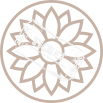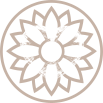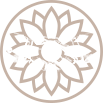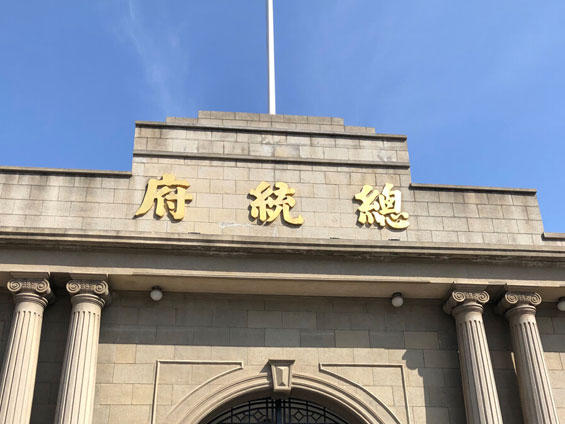


Gatehouse of presidential palace
The gatehouse was built in 1929 and designed by Yao Bin. It is also the site of the True God Glory Gate of the Heavenly Palace of the Taiping Heavenly Kingdom, the Qing Liangjiang Governor's Office, and the gate of the old Governor's Office. In front of this typical ancient Roman architectural style gate, the stone lion in front of the governor's office was retained, and a picture wall was added (it was removed in 2003 because of the widening of Changjiang Road).
The square between the gate and the lobby is paved with concrete stones, and some pillars are regularly hidden under the stones. The east and west houses still maintain the architectural style of the Qing Dynasty. The east houses used to be the three branches of official rites for the governor, and the west houses used to be the three branches of military torture. During the Republic of China, it was the guard room.
Route
Spot
Gate Tower of the Presidential Palace
Hall of the First Row of Houses
Office Building of the Presidential Palace
The Restored Garden
Display of relice and historical materials of Hong Xiuquan and the Taiping Heavenly Kingdom Palace
Exhibiton of the histrical materials of the Liangjiang Vicero's Office Residence of the Qing Dynasty
Xu Garden
The Stone goat
Secretariat of the Provisional President's Office
Facilities
Tourism commodity
The bathroom
Guard room
Food and beverage service
Luggage deposit
The ticket office
Red cross first aid station
Tourist Center
The mailbox
Entrance
Exit
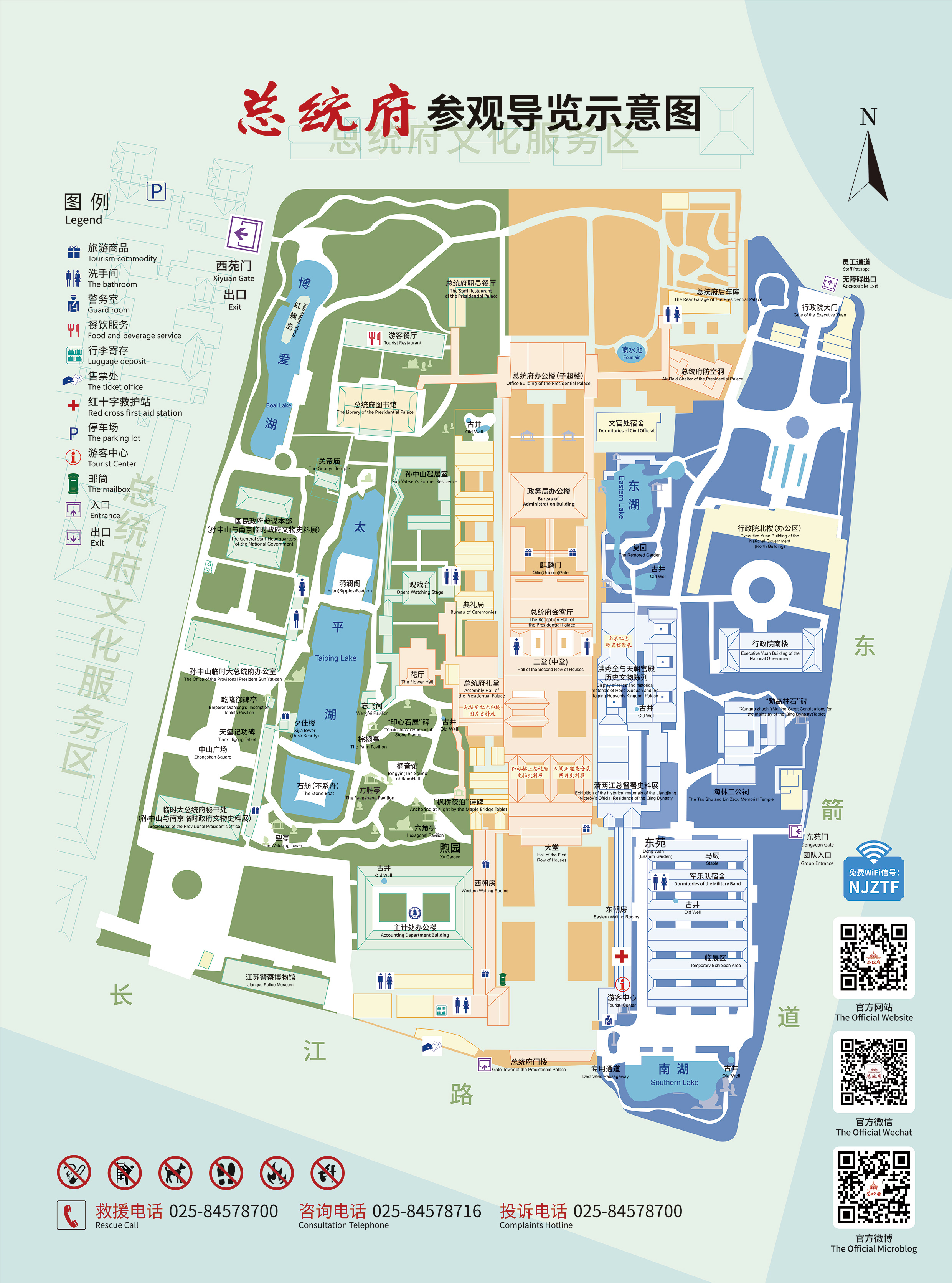
1
2
3
4
5
6
7
8
9
10
11
12
13
14
15
16
17
18
19
20
21
22
23
24
25
26
1
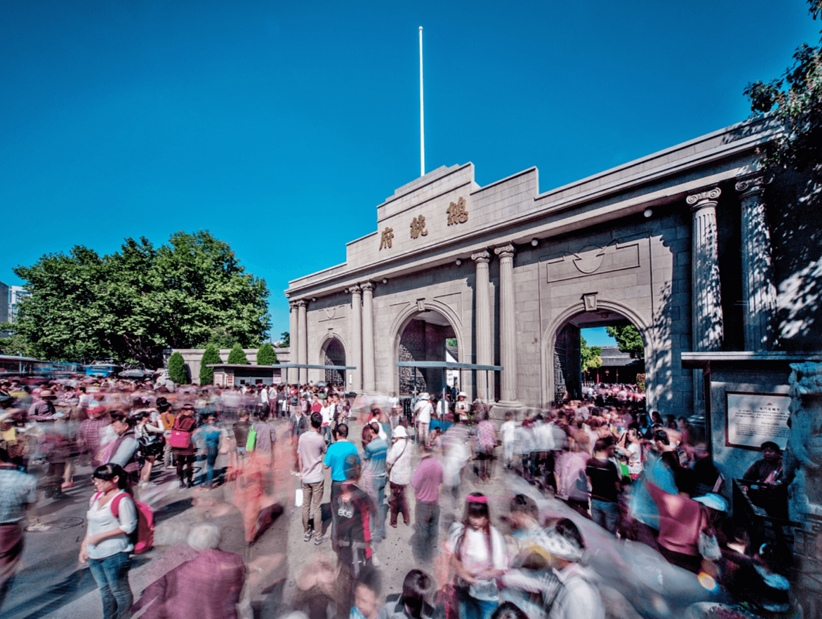
Gate Tower of the Presidential Palace
The Taiping Heavenly Kingdom erected the Heavenly Kingdom Palace in the compound of the former Liangjiang Governorgeneral’s Yamen. The gate of the Palace was called “Zhen Shen Rong Guang Men”(Genius Gate).After the Manchu Troop’s recovery of the Heavenly Capital in 1864g,it was demolished, and the outer gate of the Liangjiang Governorgeneral’s Yamen was rebuilt. The present Western style reinforced concrete gate tower was built by the Nationalist Government in 1929.Chiang Kai-shek was elected president and organized a presidential Government in May 1948, and the president gate tower was then renamed the gate of the Presidential Palace.
2

Hall of the First Row of Houses
It is the main building of the Presidential Palace. Here was the “Rong Guang Hall” (i.e. Hall of Glory) where Hong Xiuquan held court during the Taiping Heavenly Kingdom period. It was burnt down by Manchu troops after the fall of Tianjing (Nanjing). The present hall was rebuilt by Zheng Gou Fan in the reign of Emperor Tongzhi. After the victory of the Revolution of 1911, Dr Sun Yat-sen was elected President of the Provisional Government of the Republic of China. The ceremony was held in here. It became the hall of the national government after 1927.In order to commemorate this epoch-making event, Dr Sun Yat-sen wrote four Chinese characters “Tian Xia Wei Gong” (i.e. The World Belongs to the people). Now the horizontal inscribed board featuring Dr Sun’s inscription is on the crossbeam of the Hall.
3
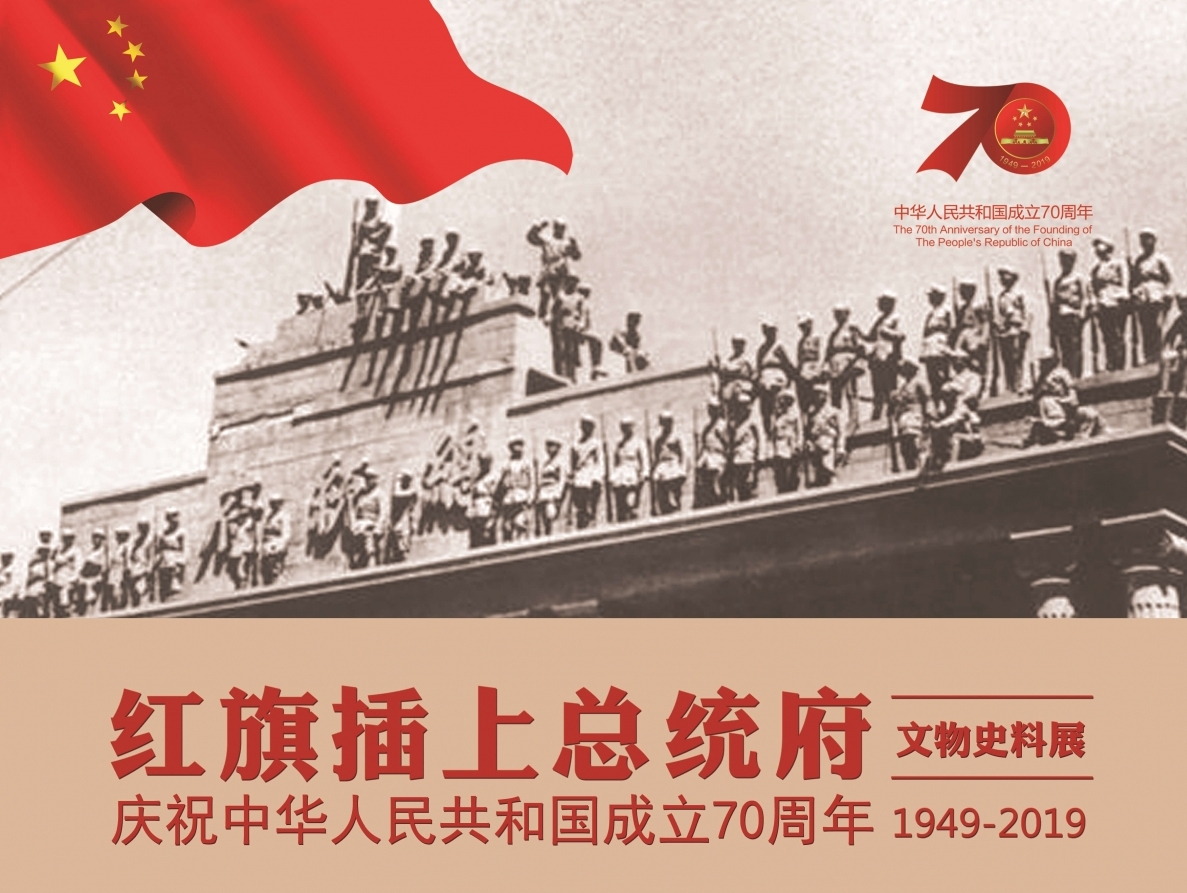
Exhibition of Pictures and Historical Materials of the Presidential Palace with the Red Flag Inserted
4
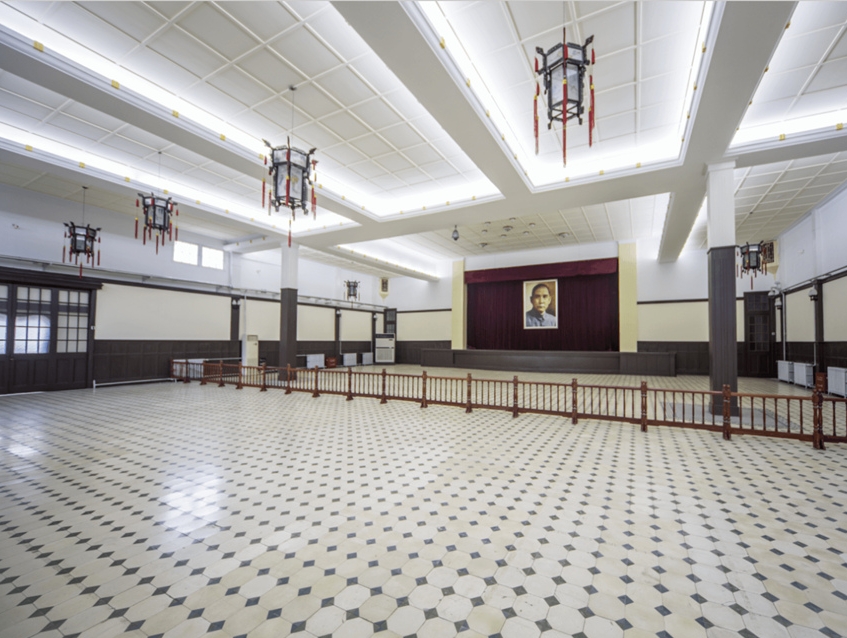
Assembly Hall of the Presidential Palace
The auditorium of the Presidential Palace was originally a garden pavilion inside the official residence of governor-general of Liangjiang Viceroy during the Qing Dynasty. During the era of Republic of China, the pavilion was used as an auditorium by the provisional government.
The auditorium had been redecorated three times, which were in years 1929, 1935 and 1946. Numbers of important meetings and activities were hold inside it. For example, Chiang Kai-shek’s presidential inauguration was held in the auditorium on 20 May, 1948.
5
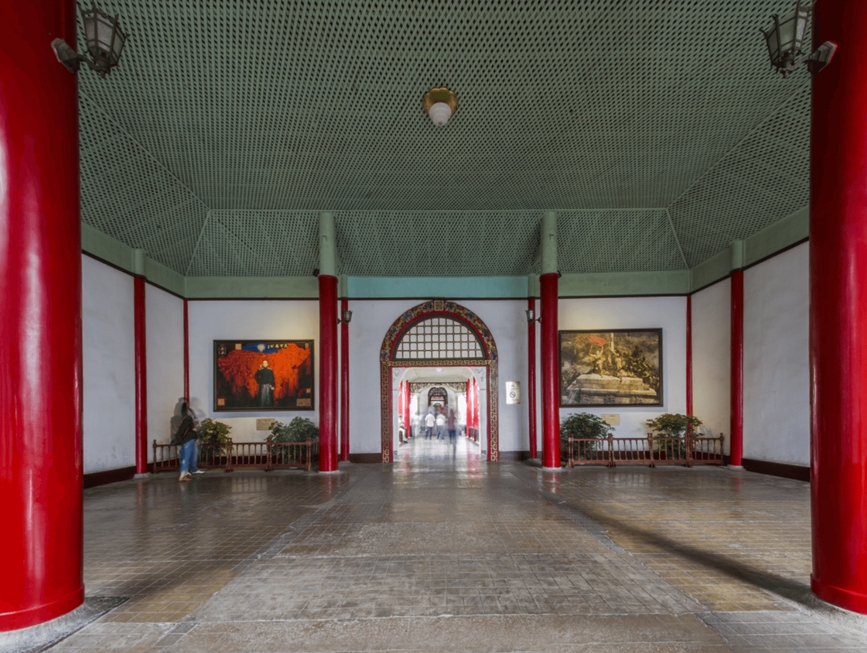
Hall of the Second Row of Houses
This hall was built in year 1870 (Qing Dynasty). Foreign diplomats were received and they handed in credentials to the president in this hall during the Republic of China era. The architectural style of this hall is a mix of Western and Chinese style. This hall has been redecorated for plenty of times. The inner part of the hall was built in Chinese style.
6
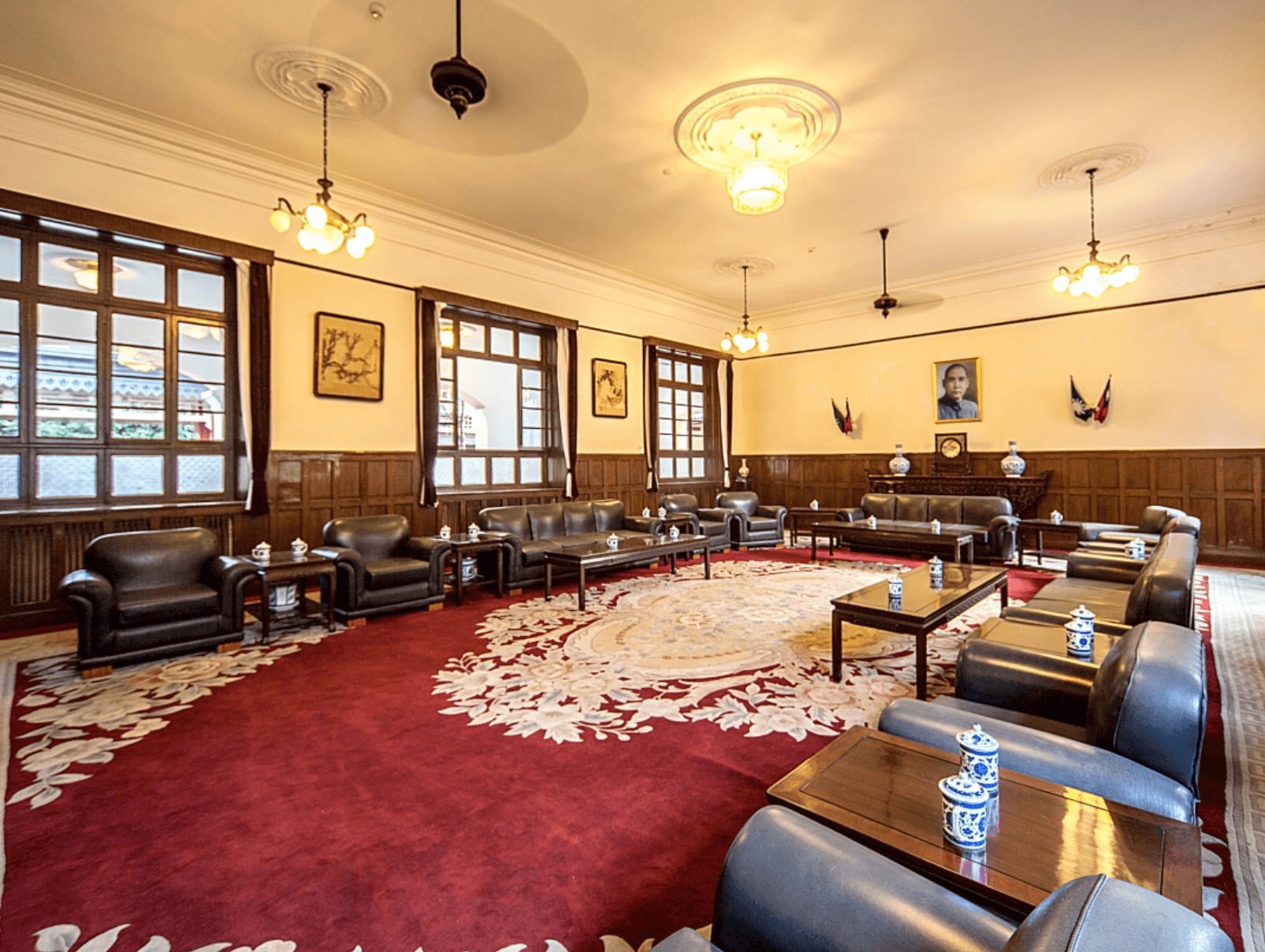
The Reception Hall of the Presidential Palace
This building was the place where President Chiang Kai-shek and Acting President Li Zongren met their guests. On 1st July 1946, President Chiang received Chou En-lai the head of the Communist Party negotiations delegation at here. On 29th March 1949, Acting President Li Zongren received Zhang Zhi-zhong and discussed about some important matters negotiation. This building was recovered based on the descriptions in history materials.
7
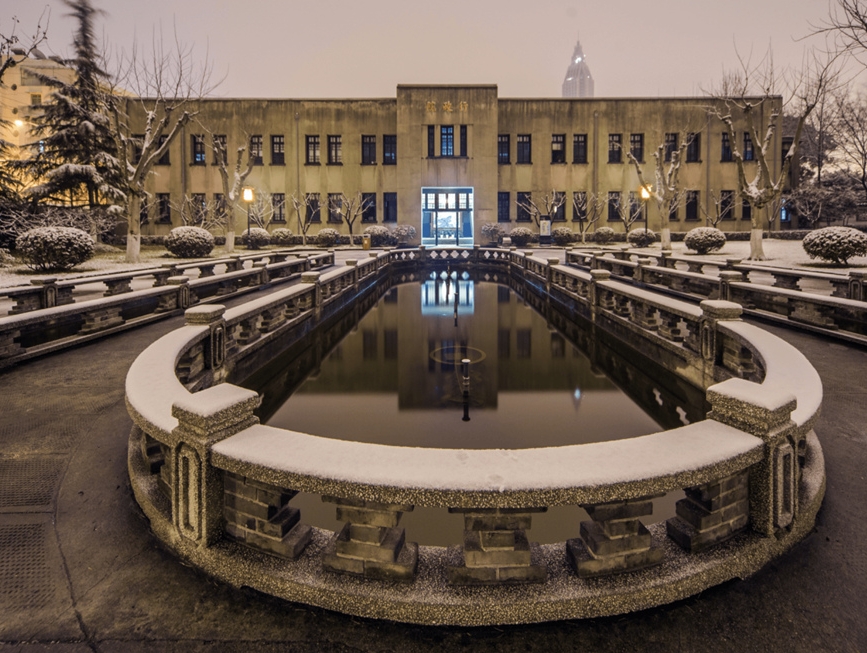
Bureau of Administration Building
This gate was originally built for the sake of safety and was destroyed in 1950’, which cut off the path which connected the Main Gate and Zi-Chao Building. There are a pair of stone Chinese Unicorns at each side of the gate.
8

Office Building of the Presidential Palace
It was originally the office building of the Republic Nationalist Government It was designed by Yu Binlie and constructed by the Lu Chuang Engineering Co. Totally cost 100 thousand silver yuan at time.
In December 1937, Japanese troops occupied Nanjing, the building used by the Japanese army and the puppet governments
After the victory of the Anti-Japanese War, the Republic Nationalist Government moved from Chongqing to Nanjing in 1946, successively as the national government in the presidential office building in May 1948. The offices of the National Chairman Linson, President Chiang kai-shek, and the secretary-general , as well as state conference hall and so on inside of it.
Front of the building, there were two cedar, planted by Linson, Chairman of the Nationalist Government. The eastern one was confirmed dead in 2005.
9

Executive Yuan Building of the National Government(North Building)
It was built in late 1920’s as the main office building of the Republic Nationalist Government Executive Yuan. The Executive Yuan was the supreme administrative organ of the Nationalist Government.It ruled the Ministries of Interior, Foreign Affairs, Finance, Economy, Military Affairs, Education, Overseas Chinese Affairs Commission and so on.
During the Anti-Japanese War ,the Executive Yuan was moved to Chongqing.After the victory of the War , the building became the office of the Social Department, Ministry of Territory etc in1946
10
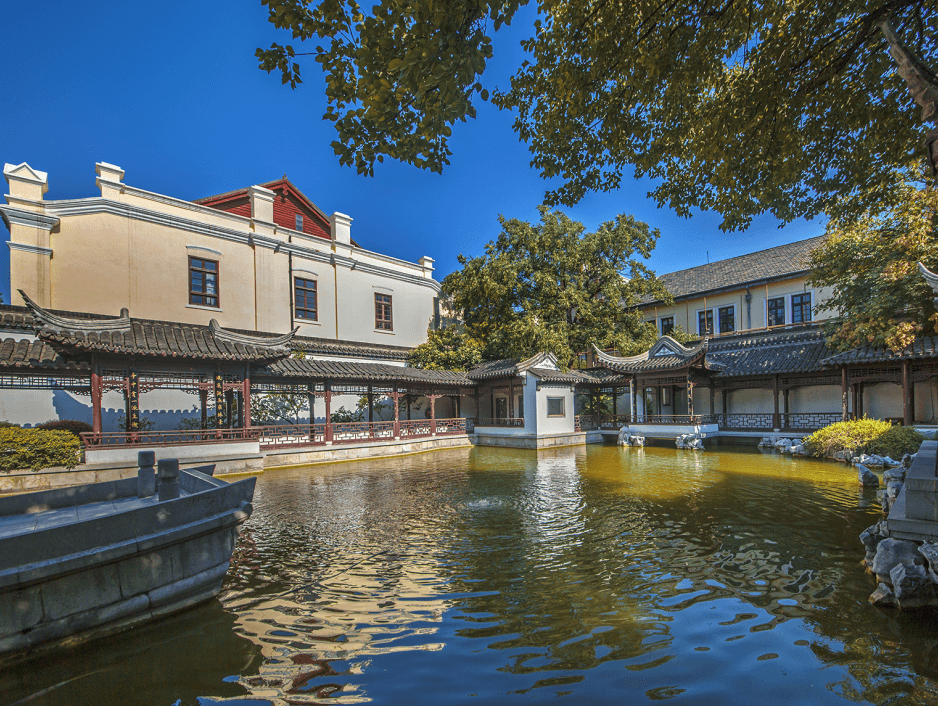
The Restored Garden
During the Qing Dynasty, this garden was LiangJiang Viceroy’s backyard. In the period of Heavenly Kingdom, here built some new facilities such as stone boat, stone hill and pavilion inside this garden. In 1864, this garden was destroyed by the Hunan local troops.It was rebuilt in year 2002 based on the history materials.
11
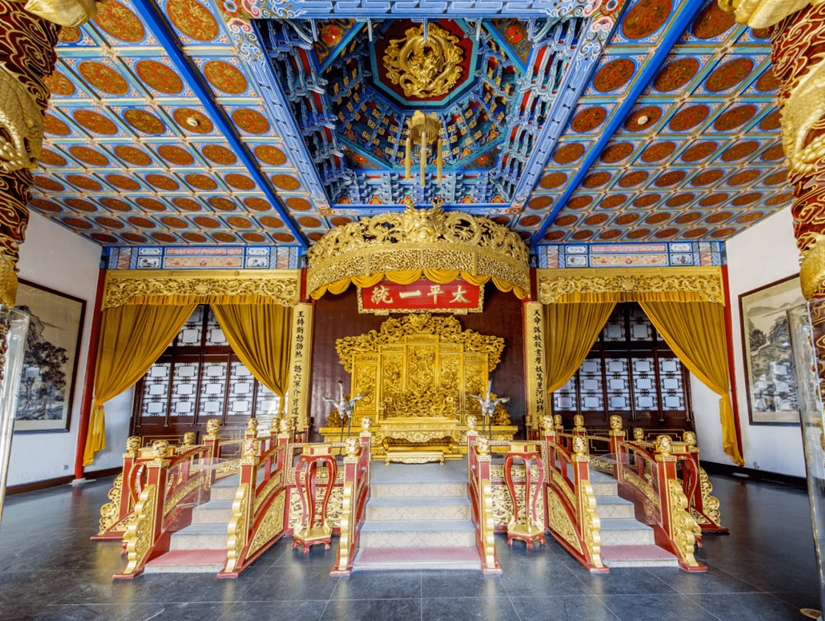
Display of relice and historical materials of Hong Xiuquan and the Taiping Heavenly Kingdom Palace
12
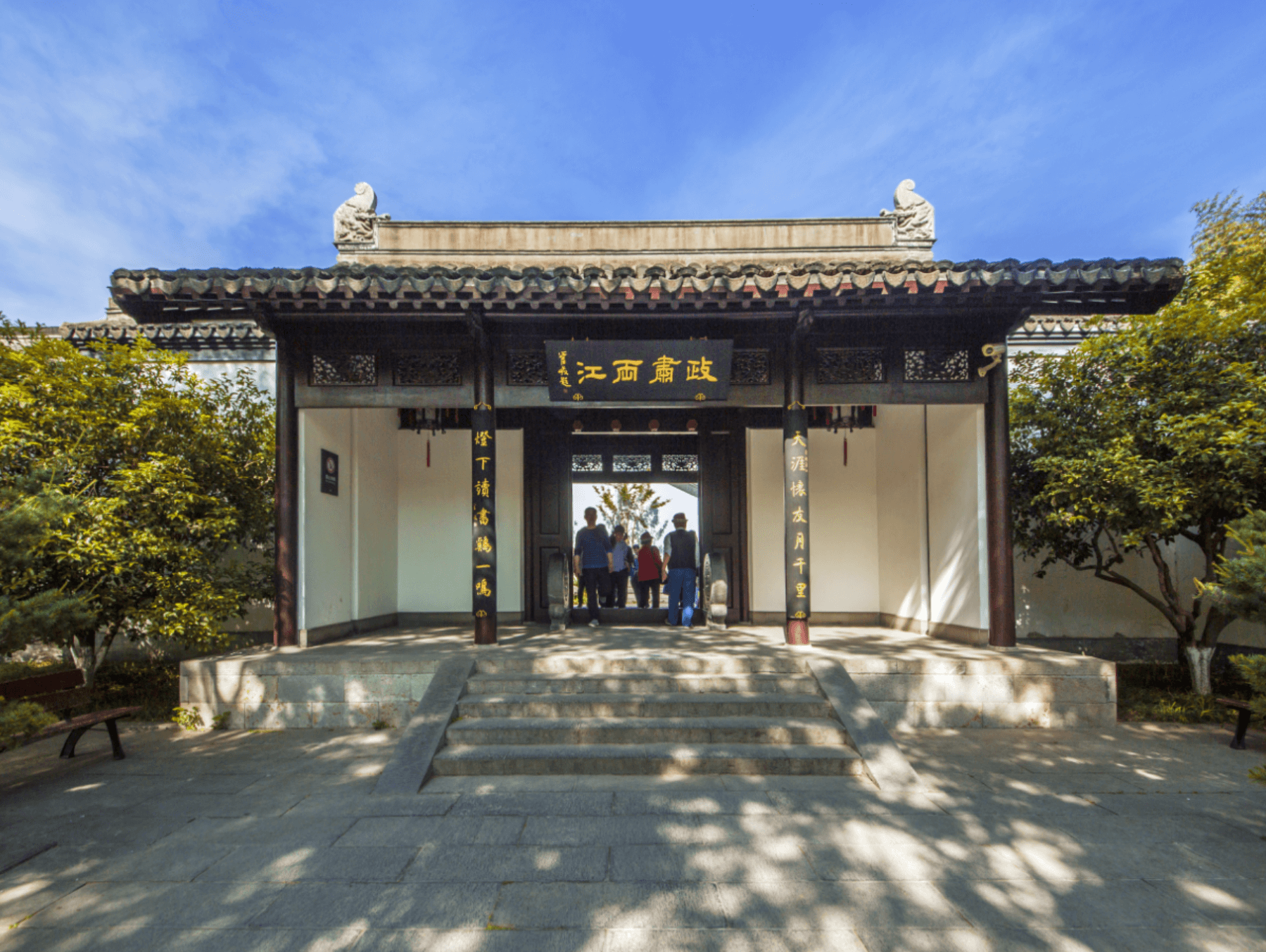
Exhibiton of the histrical materials of the Liangjiang Vicero's Office Residence of the Qing Dynasty
The exhibition consists of three parts: historical materials display, exhibition hall building restoration, restoration of exhibition of the first row hall.
13
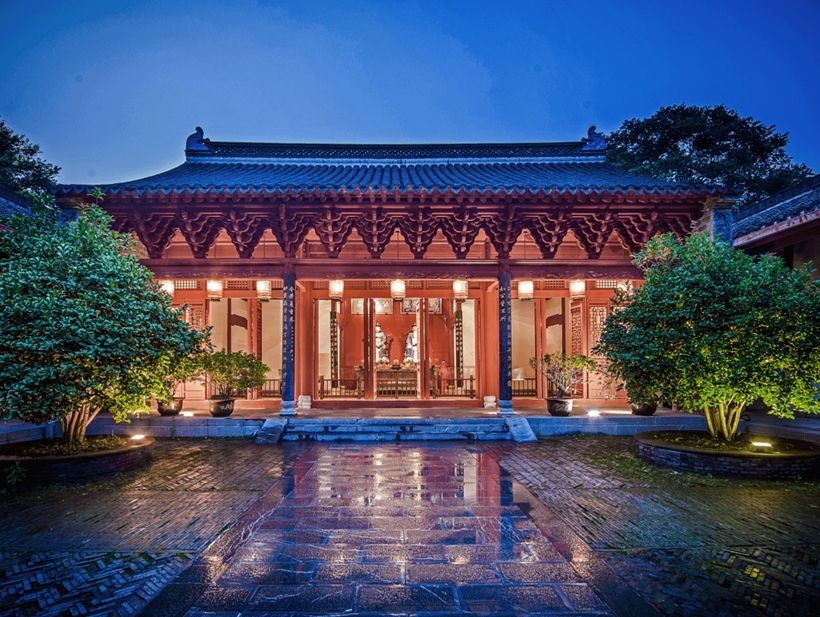
The Tao Shu and Lin Zaxu Mamorial Tample
This temple was built by LiangJiang Viceroy governor Zuo zongtang for memory of Tao Shu and Lin Zexu(Both of them were the famouse Liangjiang Viceroy governor) , in year 1883. The original temple was built outside the Presidential Palace,and recreated with the original materials at here in 2007.
14
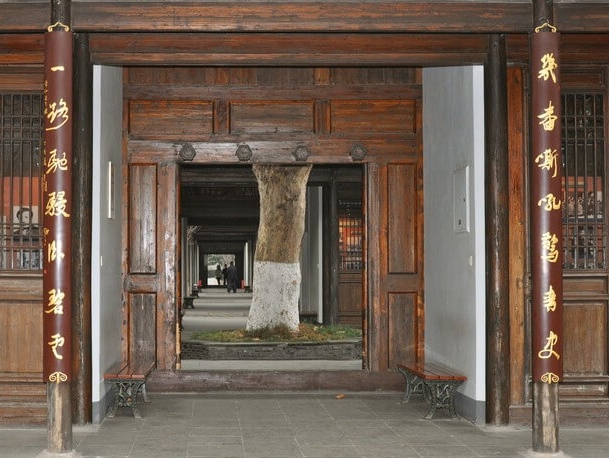
Stable
There were real horses living in this stable during the LiangJiang Viceroy era and the Heavenly Kingdom era. After the National Government moved in the Presidential Palace, this stable was transferred into residences for official drivers, security teams, the Military Band members and cleaning staffs. The stable before us is only a recreation.
15
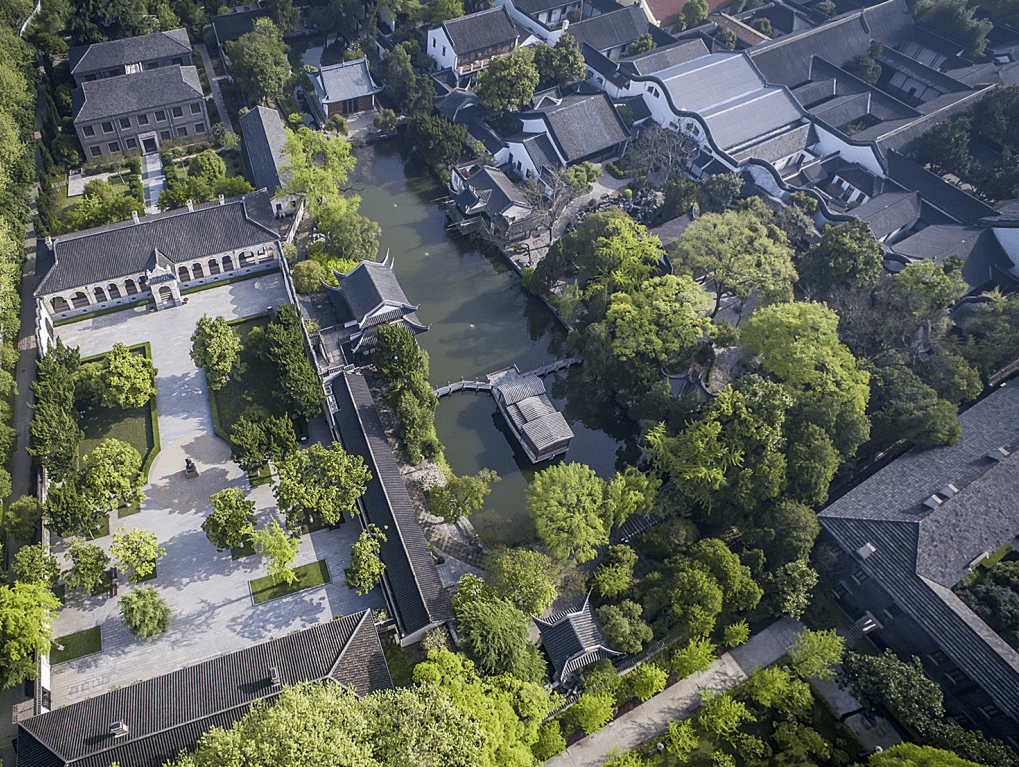
Xu Garden
The Xu Yuan Garden was the garden of the Han Prince’s Residence in the early of the Ming Dynasty.It became the garden of the Liangjiang Viceroy office residence in the early Qing dynasty. It was damaged by the Qing Imperial Troops and restored by Zeng Guofan .
The Provisional Government of the Republic of China was founded on 1 January 1912.The President Sun Yat-sen’s Office and Residence were settled at here. After the establishment of the Nanjing Republic Nationalist Government in April 1927, the Garden served as the Offices of the Headquarters of the Nationalist Revolutionary Army, the Military Affairs Council of the Nationalist Government.
16
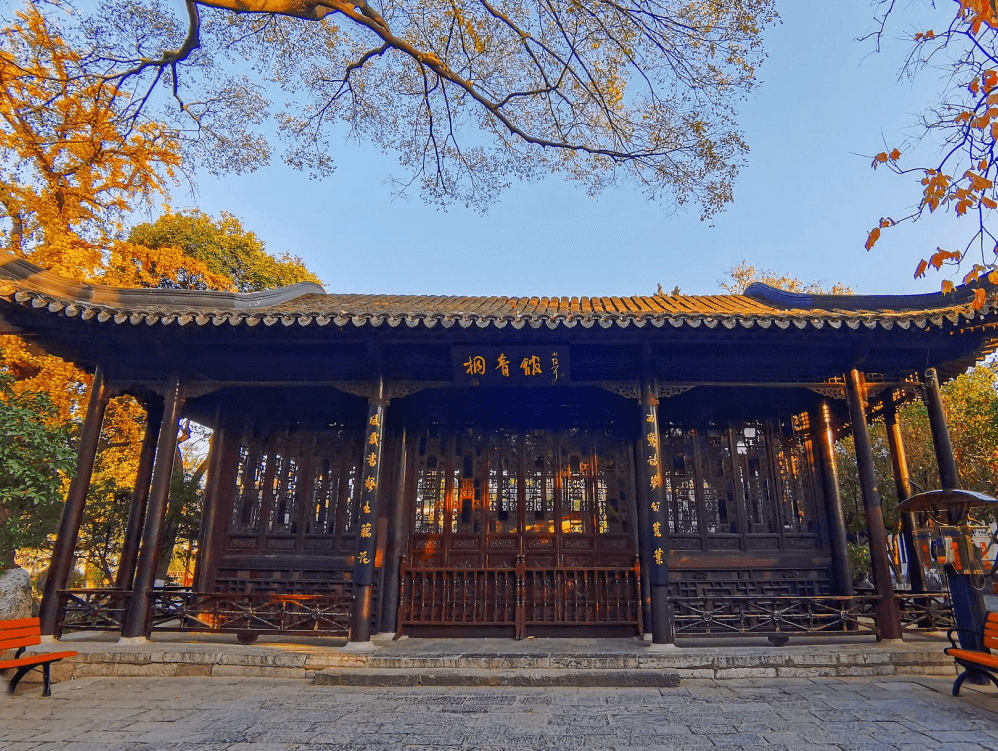
Tongyin(The Soundof Rain)Hall
This hall was a Chinese style architecture which built in ninth year of the Qing Emperor Tongzhi (1870).It was called “Tongyin Hall” because you can hear the sound of rain falling on the leaves of the trees when you are in this hall. Zheng Gou Fan always playing chess in the hall. Dr. SunYat-sen also used this hall as meeting room.
17
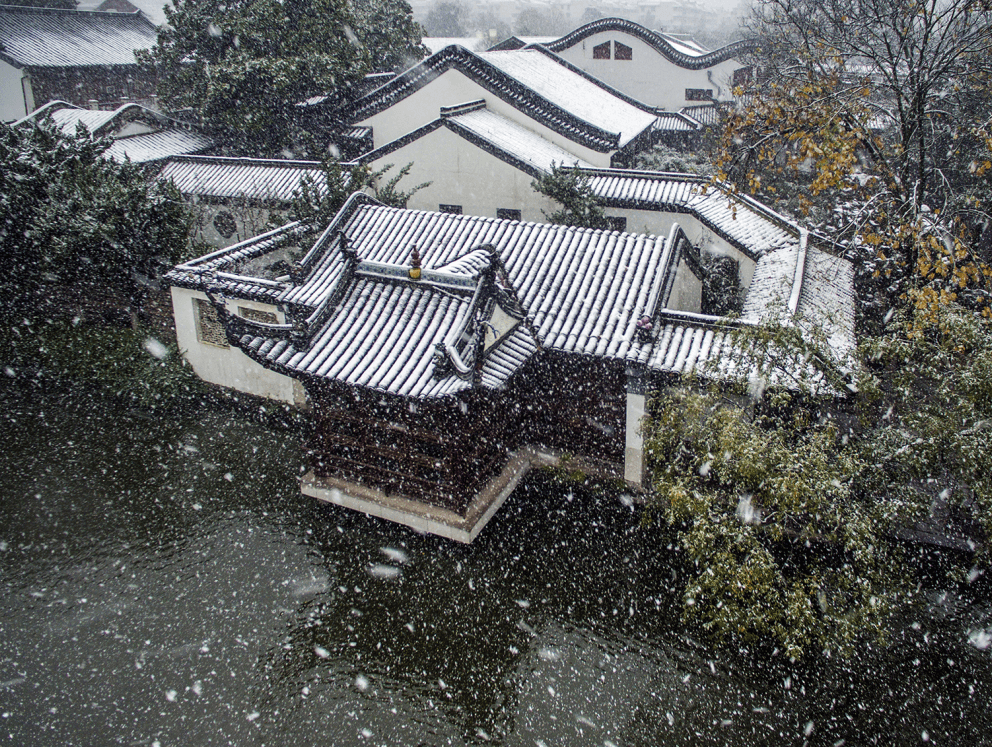
Wangfei Pavilion
This classical Chinese garden style architecture was built in year 1870. Back in the days, this pavilion was so beautiful that birds preferred to stay rather than flying away. Therefore people named this pavilion ‘Forget to Fly Pavilion’.
18
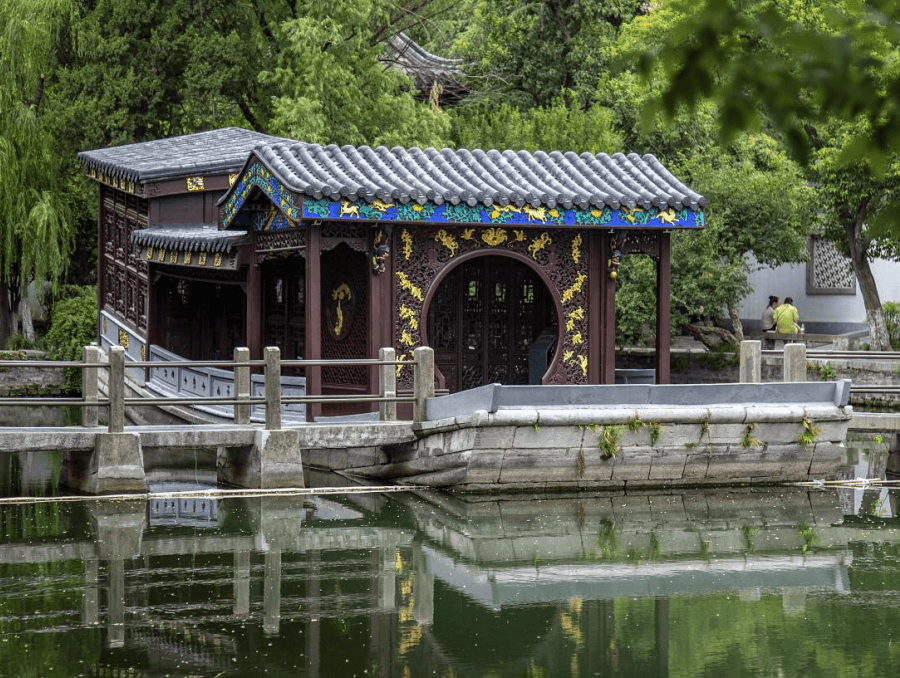
The Stone goat
“Bu Xi Zhou” (Need-not-tether-boat)was built in the peiod of Emperor Qianlong Qing Dynasty. on his second inspection tour to South China.King of the Heavenly Kingdom Hong Xiuquan, President Sun Yat-sen always came here to take a rest.The boat hull was made of stone.Its wood cabin is exquisite simple and unsophisticated and its roof is covered with black tiles. In the Heavenly King’s Palace,the Palace was burned by the Hunan local troops except the stone boat was still saved. So it is the oldest architecture in the Presidential Palace.
19
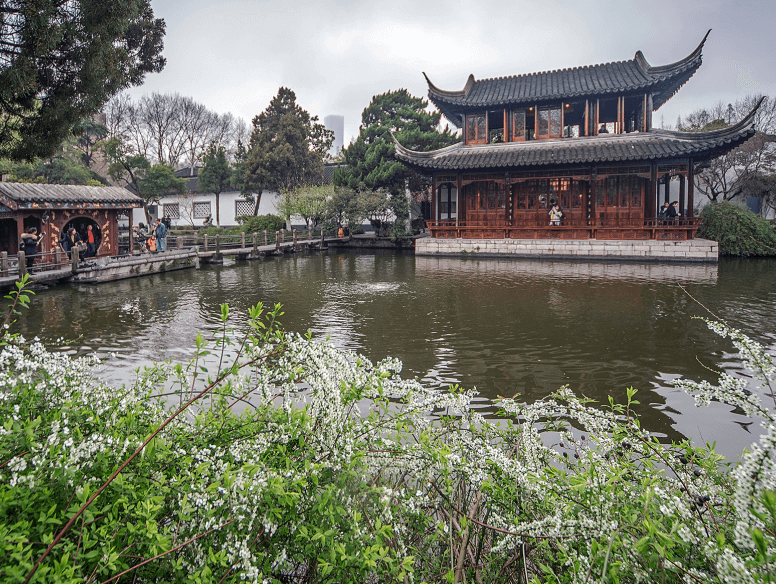
XijiaTower(Dusk Beauty)
The tower was built in the ninth year of the reign of the Qing Emperor Tongzhi(1870).It was called Xijia Tower because it was very beautiful when the setting sun cast a golden glow over the building.
20
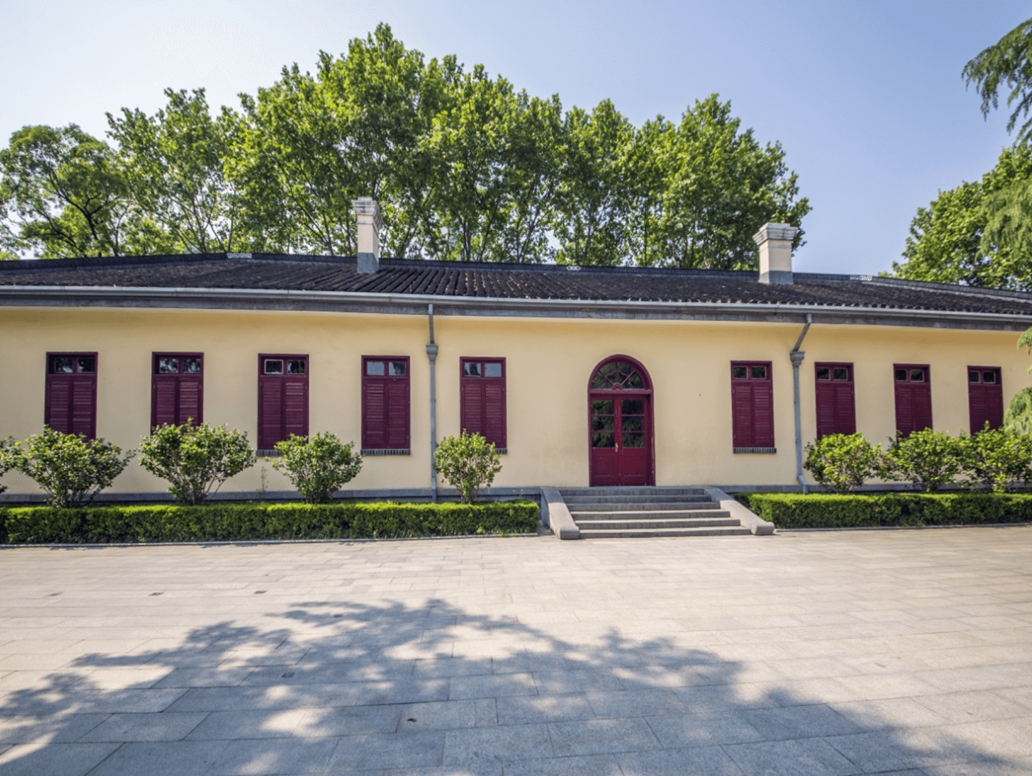
Secretariat of the Provisional President's Office
Duan Fang, one of the Liangjiang Viceroys during Qing Dynasty built the hours. He was exposed to Western Culture when he traveled to Europe. After he returned, he decided to build an Western Style building and completed in 1910.Dr Sun Yat-sen sworn as president in 1st January 1912 and this building became his office.
21
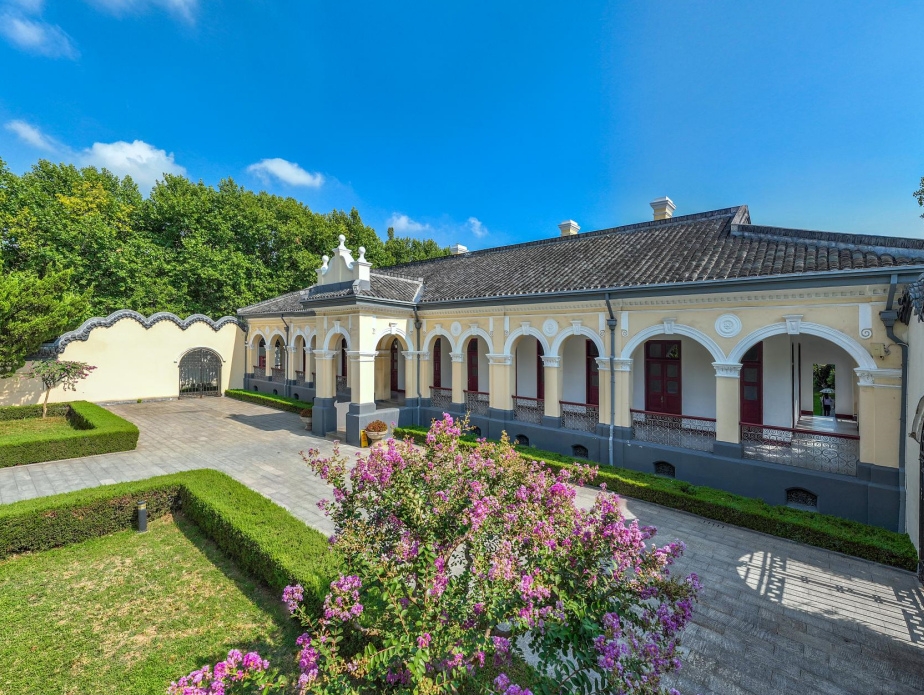
The Office of the Provisonal Presdent Sun Yat-sen
Sun Yat-sen took his oath of office as interim president on January 1, 1912, to his proclamation on April 1.
22
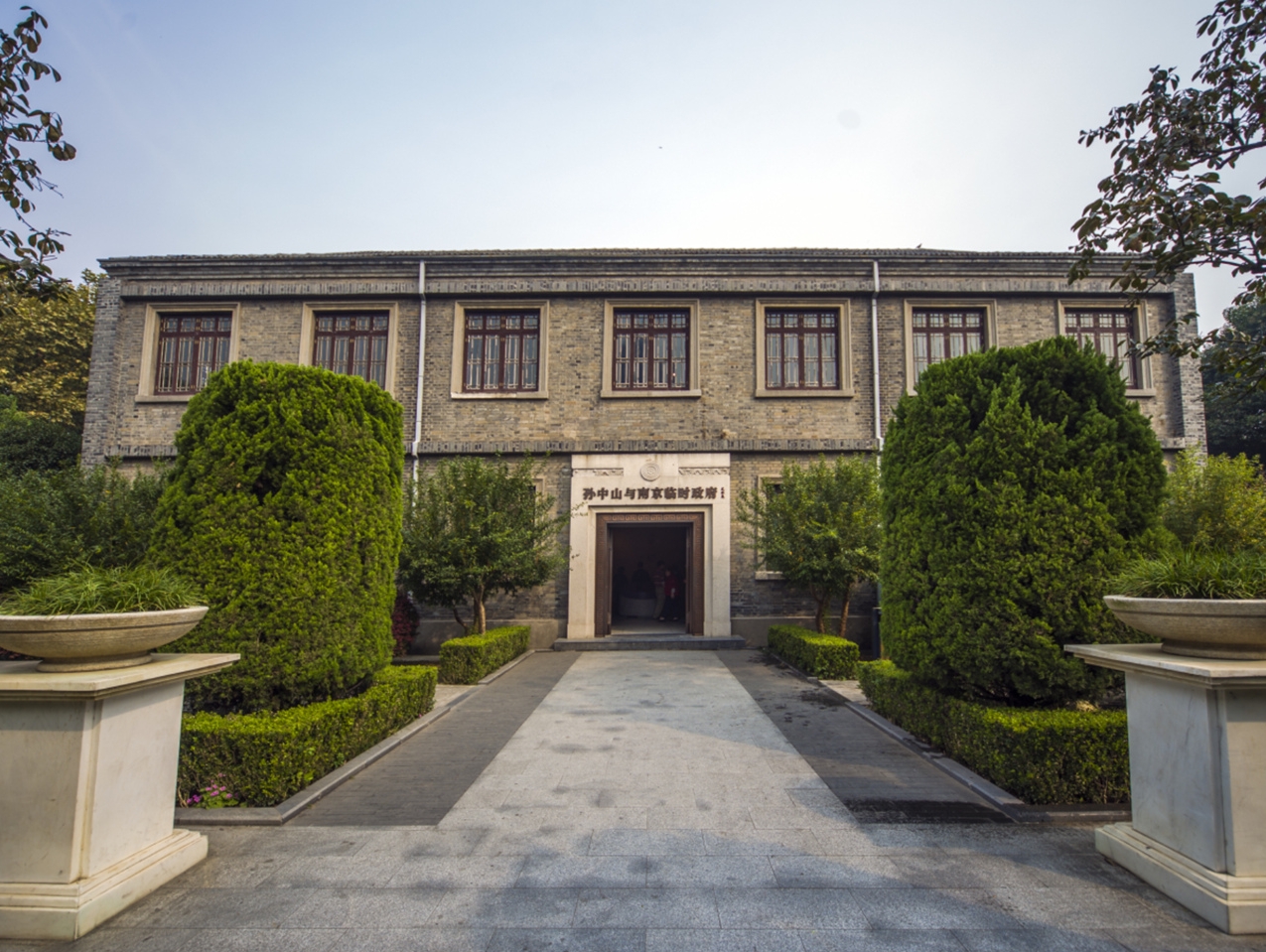
The General staff Headquarters of the National Government
This modern buildings was built in the 1920s, . In November 1928 the Nationalist Government Chiefs of Staff was establishment,.It was under the Nationalist government. Military forces in charge of defense matters, govern national staff officers, Army University, measuring Administration and foreign military attaches. Li Chi-shen, Zhu Peide, Chiang Kai-shek, Cheng Qian has served as chief of staff. After the Anti-Japanese War ,it changed to be the Military orders department.
23

The Guanyu Temple
This temple was built in the early years of Qing Dynasty. Two stone tablets were discovered underground in 2002. The tablets recorded some important information of the process of the temple and the names who donated money to rebuild the temple in sixteen years reign Shunzhi Emperor(A.D.1659). The building we see now was rebuilt in 2003.
24
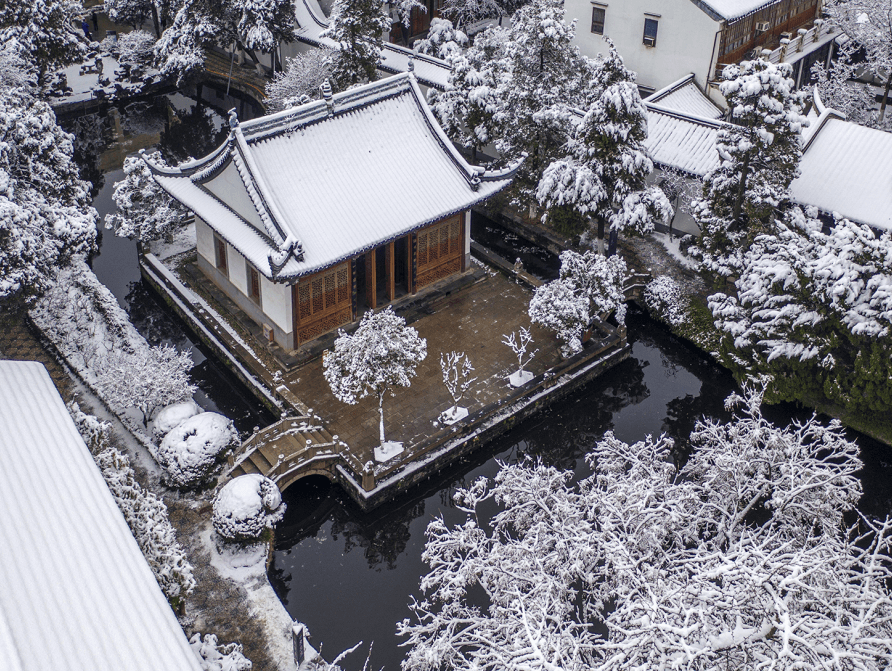
Yilan (Ripples) Pavilion
The original pavilion was used as the house for confidential documents of the Heavenly Dynasty Palace of the Taiping Heavenly Kingdom.We see now the pavilion was rebuilt in 1870.
After the Republic of China was established in 1912, President Sun passed here every day from his residence to his office. Sometimes he worked and received guests at here, It served as the offices of the Counselors, the General Staff Headquarters of the Nationalist Government and the Military Affairs Bureau of the Presidential Government from the 1930s to the 1940s.
25
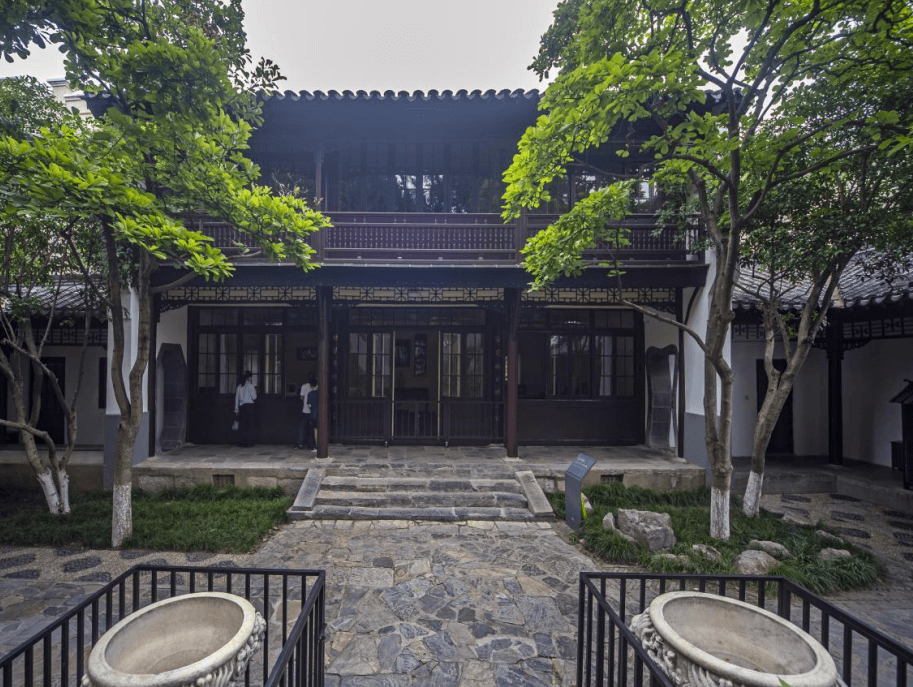
Sun Yet-sen’s Former Residence
This building was built in 1901, and it was originally used as LiangJiang Viceroy’s Residence. This place was also Sun Yet-sen’s Former Residence while he was the Provisional President, from January to April 1912. This building consists of two floors. Meeting room, living oom and security room are located on the first floor; Washroom, dining room and bedrooms are located on the second floor. Sun Yet-sen’s family had also been living in this building.
26
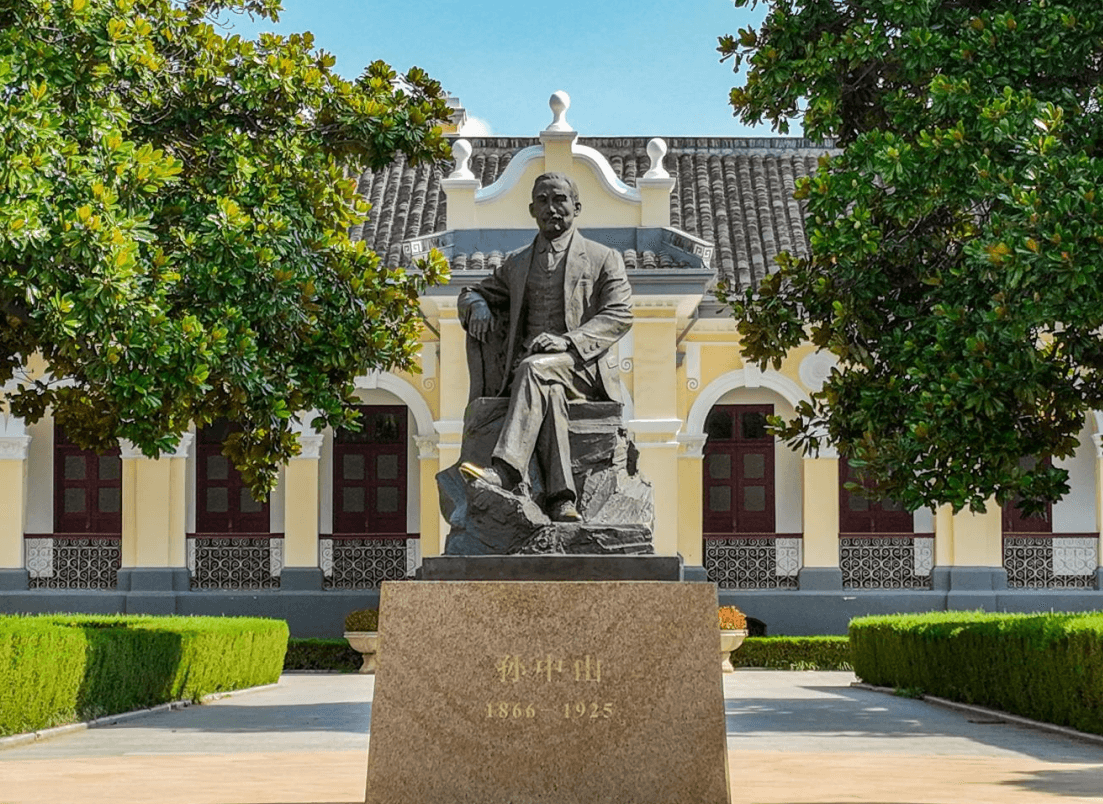
Zhongshan Square
1

Gate Tower of the Presidential Palace
The Taiping Heavenly Kingdom erected the Heavenly Kingdom Palace in the compound of the former Liangjiang Governorgeneral’s Yamen. The gate of the Palace was called “Zhen Shen Rong Guang Men”(Genius Gate).After the Manchu Troop’s recovery of the Heavenly Capital in 1864g,it was demolished, and the outer gate of the Liangjiang Governorgeneral’s Yamen was rebuilt. The present Western style reinforced concrete gate tower was built by the Nationalist Government in 1929.Chiang Kai-shek was elected president and organized a presidential Government in May 1948, and the president gate tower was then renamed the gate of the Presidential Palace.
2

Hall of the First Row of Houses
It is the main building of the Presidential Palace. Here was the “Rong Guang Hall” (i.e. Hall of Glory) where Hong Xiuquan held court during the Taiping Heavenly Kingdom period. It was burnt down by Manchu troops after the fall of Tianjing (Nanjing). The present hall was rebuilt by Zheng Gou Fan in the reign of Emperor Tongzhi. After the victory of the Revolution of 1911, Dr Sun Yat-sen was elected President of the Provisional Government of the Republic of China. The ceremony was held in here. It became the hall of the national government after 1927.In order to commemorate this epoch-making event, Dr Sun Yat-sen wrote four Chinese characters “Tian Xia Wei Gong” (i.e. The World Belongs to the people). Now the horizontal inscribed board featuring Dr Sun’s inscription is on the crossbeam of the Hall.
3

Office Building of the Presidential Palace
It was originally the office building of the Republic Nationalist Government It was designed by Yu Binlie and constructed by the Lu Chuang Engineering Co. Totally cost 100 thousand silver yuan at time.
In December 1937, Japanese troops occupied Nanjing, the building used by the Japanese army and the puppet governments
After the victory of the Anti-Japanese War, the Republic Nationalist Government moved from Chongqing to Nanjing in 1946, successively as the national government in the presidential office building in May 1948. The offices of the National Chairman Linson, President Chiang kai-shek, and the secretary-general , as well as state conference hall and so on inside of it.
Front of the building, there were two cedar, planted by Linson, Chairman of the Nationalist Government. The eastern one was confirmed dead in 2005.
4

The Restored Garden
During the Qing Dynasty, this garden was LiangJiang Viceroy’s backyard. In the period of Heavenly Kingdom, here built some new facilities such as stone boat, stone hill and pavilion inside this garden. In 1864, this garden was destroyed by the Hunan local troops.It was rebuilt in year 2002 based on the history materials.
5

Display of relice and historical materials of Hong Xiuquan and the Taiping Heavenly Kingdom Palace
6

Exhibiton of the histrical materials of the Liangjiang Vicero's Office Residence of the Qing Dynasty
The exhibition consists of three parts: historical materials display, exhibition hall building restoration, restoration of exhibition of the first row hall.
7

Xu Garden
The Xu Yuan Garden was the garden of the Han Prince’s Residence in the early of the Ming Dynasty.It became the garden of the Liangjiang Viceroy office residence in the early Qing dynasty. It was damaged by the Qing Imperial Troops and restored by Zeng Guofan .
The Provisional Government of the Republic of China was founded on 1 January 1912.The President Sun Yat-sen’s Office and Residence were settled at here. After the establishment of the Nanjing Republic Nationalist Government in April 1927, the Garden served as the Offices of the Headquarters of the Nationalist Revolutionary Army, the Military Affairs Council of the Nationalist Government.
8

The Stone goat
“Bu Xi Zhou” (Need-not-tether-boat)was built in the peiod of Emperor Qianlong Qing Dynasty. on his second inspection tour to South China.King of the Heavenly Kingdom Hong Xiuquan, President Sun Yat-sen always came here to take a rest.The boat hull was made of stone.Its wood cabin is exquisite simple and unsophisticated and its roof is covered with black tiles. In the Heavenly King’s Palace,the Palace was burned by the Hunan local troops except the stone boat was still saved. So it is the oldest architecture in the Presidential Palace.
9

Secretariat of the Provisional President's Office
Duan Fang, one of the Liangjiang Viceroys during Qing Dynasty built the hours. He was exposed to Western Culture when he traveled to Europe. After he returned, he decided to build an Western Style building and completed in 1910.Dr Sun Yat-sen sworn as president in 1st January 1912 and this building became his office.
Tourism commodity
The bathroom
Guard room
Food and beverage service
Luggage deposit
The ticket office
Red cross first aid station
Tourist Center
The mailbox
Entrance
Exit



